Big Knife, Big Problem
“A man who tried to scare off intruders by waving a samurai sword was stabbed with his own weapon. The 65-year-old took the sword from a display in his living room and waved it at three youths who were in the front garden of his flat in east London. When he looked outside again, the garden was empty but he then found two youths on the landing outside his bedroom. He shouted at them to leave but an assault followed during which one of the intruders stabbed him with the sword before they ran off taking the weapon with them.”
Your To-Do and Don't-Do Guide to New York City This Weekend
Or maybe just stay home in bed? (Subscribe in iTunes)
A Breezy Summertime Guide To Picnicking In The City
by John Ore
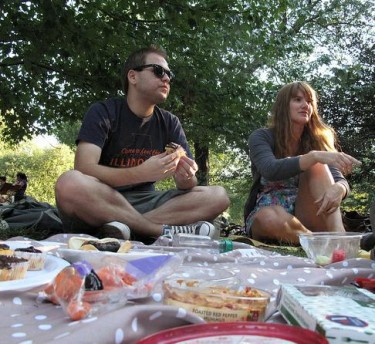
Sometimes, the curses of living in NYC turn out to be its blessings. When you can stretch your arms out and touch both walls of your bedroom — or, both roommates — the great outdoors becomes less an escape and more of a living room. Luckily, Frederick Law Olmsted and Calvert Vaux had your back even before you moved in with your “boyfriend.” New Yorkers have long enjoyed recreational use of open public spaces. I like to uphold that tradition with the classic picnic in the park. And sure, grabbing a slice and flopping down on someone’s sweatshirt in Washington Square can be perfectly nice — and easy. But with a little more effort, you can turn a simple snack into a luxurious idyll in the park. When the weather is nice, forget about brunch: go have a picnic.
GEAR
You don’t need to have a minivan packed with Costco pallets of Juicy Juice and card tables to enjoy a picnic in our city’s fair green spaces. Nimble and portable are the hallmarks of good picnic prep: the subway and capricious summer weather often demand it. Here are some basics to get you started.
Start off with a good blanket. Something durable and waterproof is ideal for babies and clumsy drunks on damp lawns. Supplement that with classic Mexican blankets and beach towels, and you’ve got a respectable footprint for base camp.
To haul your moveable feast, traditional wicker pic-a-nic baskets just won’t do, and they aren’t practical. I favor a backpack-style with integrated food and wine coolers that frees up your hands to carry baguettes or grab a subway pole. You’ll also need those hands for the reusable cooler bags that keep your baby carrots crisp.
While the picnic backpack offers basic utensils for a romantic cuddle with the girl in the gingham dress, you’ll still want to have plenty of extras on hand for friends. God knows you’ll get kicked out of Brooklyn for using plastic, so thankfully there are green options to save your artisanally hand-cured bacon.
And where there’s bacon, there will be dogs. If you have dogs like mine that will guilt trip you forever for going to the park without them, try this doggie tie-down stake, which lets them join without tying you up. Plant the stake firmly in the ground, secure the leash to it, and there! the hounds have room to roam without traipsing through the deviled eggs.
For all of you haters, this is where a stroller comes in handy. My daughter is at her most useful whenever she can act as a mule for bottles of wine, footballs and frisbees.
BOOZE
Technically, booze is not allowed in NYC parks. But like speeding and removing liquids from your carry-on, I like to think of this as a suggestion rather than a hard-and-fast rule.
And speaking of rules, it’s time to be honest with ourselves and realize that boxed wine isn’t just for ice cubes and mothers-in-law. It’s ideal for picnics. For one, it’s practical: it’s lighter than hauling glass bottles, packs a better punch than beer, and lasts for weeks after it’s been opened. For another, there are actually several non-Franzia options available that are quite decent. The Steinschaden Gruner Veltliner is a liter and a half of summery goodness. The Bandit offers a passable Pinot Grigio that was made for Solo cups. You can get three bottles of drinkable rose in a “vinity case.” That’s a lot of value, versatility, and (alcohol by) volume.
Just remember to be discreet: brown bag it, bring plastic cups, keep your head on a swivel.
LOCATIONS
Now that you are loaded for bear, it’s time to pick your picnicking venue. While New York offers a plethora of lovely neighborhood parks, I’m focusing here on the big ones: Central Park and Prospect Park.
In Central Park, I avoid the Sheep Meadow for one main reason: dogs are not allowed. Instead, I choose the lawn just to the northeast. It’s less of a scene than the Sheep Meadow, there’s plenty of shade, and it’s in close proximity to the restrooms at the Sheep Meadow Cafe and Bethesda Terrace (hint: the Bethesda Terrace restrooms are less crowded/gnarly). On Sundays, you can grab a nice shaded spot on the eastern edge and watch the disco rollerskaters on the Central Park Driveway.

Picnicking is not just for hot summer days, either. If you want to avoid crowds, ticket fees and beer lines, a proper picnic is the best way to experience Celebrate Brooklyn or Central Park SummerStage. Flop down in the grass with your crew and your vino on a summer evening while enjoying the strains of Sigur Ros drifting through the trees.
STOCKING UP
The best thing about a picnic is that it can be relatively spontaneous. You’ve got the gear, the dogs need a walk anyway, and the weather is holding steady. Just turn your leftovers into a great al fresco meal. Cold chicken legs leftover from last night, that box of Carr’s you forgot you had, baby carrots and hummus, pasta and veggies that can become a quickie pasta salad — this would be uninspiring stuff for an indoor meal, but becomes instantly eclectic and great when served at a picnic. Best of all, it’s easy to get packed up and ready to go, thanks to all of those takeout containers you save religiously.
And if you need some finishing touches it’s easy to stop along your way. While everyone’s got their own favorite spot for securing serrano ham or tempranillo rose, these are some provisioning spots I’ve collected that are close to the subway stops for prime locations Prospect and Central parks. Getting stuff to go is easy, the portions and containers travel well, so you can collect what you need on the way to the park.
There are several places to stock up on the west side of Central Park, close to the 1,2 and 3 or B, C lines. If you’re approaching from the east side, my condolences. Fairway can be its own plane of Hell on a Sunday evening, but it’s a New York institution that offers everything you need at its deli counter, from cold cuts to cold slaw, and has a great olive bar. You can even get cooler bags. If it’s too much of an ordeal, Citerella is right next door. Typically less crowded, it’s also more expensive with less selection, but this is a picnic we’re planning for, not a wedding reception. If you’re trying to impress a date, stop by Salumeria Rosi and grab a glass of wine while you try to figure out how guanciale can be incorporated into a picnic menu.
Wine shops on the UWS don’t feel as loosey-goosey as those in Brooklyn, so I can’t vouch for their boxed wine selection as of late. Acker Merrall & Condit is on the higher end of the scale, offers a selection of chilled bottles and has a decent liquor selection. Great California selections for those jonesing for the West Coast, which can sometimes be a challenge in Old World-centric NYC wine shops. Over on Columbus, you have the yin and yang of UWS wine stores. Nancy’s Wine For Food is smaller, intimate, has great eclectic stuff from out-of-the-way places and a terrific selection of roses from Germany, Italy and Spain, most of them chilled. On the other end of the spectrum is the relatively massive 67 Wine and Spirits, which is oddly enough on 68th and Columbus. Two floors of boozy goodness, with the chilled stuff stashed behind a counter beneath the stairs to the second floor.
All of these places offer dog treats, by the way.
Similarly, on the south west edge of Prospect Park is a solid cluster of spots on 7th Avenue off the F and G lines that can outfit you for your trek into the wilds of Brooklyn. Start off at Russo’s Mozzarella where the fresh pasta might not come in handy, but the handmade mozzarella might. So will the pasta salads, spareribs, and olive bar. Also, their sandwiches are obscenely large and awesome. Union Market is a solid choice for prepared foods and yet another good olive bar, plus you can get mochi for dessert. The Ploughman recently took over the old Grab Specialty Foods spot, has a great selection of charcuterie and cheeses, growlers of a rotating selection of beer (tastings on Saturdays!), and big, park-friendly 500ml cans of DAB Pilsener.
Conveniently next door is Slope Cellars, a tidy wine shop with a knowledgeable staff and cooler full of chilled bottles. When the weather turns warm, they are unapologetic about trotting out the boxed stuff, in a very good way. Great selection of booze, from Armagnac to Carpano Antica to goji berry liqueur. Across the street from Brookvin is Big Nose Full Body, owned by the same folks, although they pride themselves on not offering the same selection as the wine bar. While they don’t sell booze, this tiny wine shop packs a punch, and offers a good selection of whites and roses that they can chill for you while you are checking out.
Thus armed, you are now prepared for a summer of picnic bliss. Remember, it just ain’t a picnic without the ants.
Previously: Grilled Shrimp and Asparagus and How To Make Beer Ice Cream
John Ore regularly employs the phrase “a few sandwiches short of a picnic”.Top photo by Matt Hurst.
A Poem By Matthew Lippman
by Mark Bibbins, Editor
Wolf Territory
We sit on the couch and the wolves are outside.
Someone plays a drum next door. Wolves.
They bang their wolf drum sticks on the greasy drum pad
and wake up the neighborhood.
You pretend to hold my hand.
I hold your elbow. When we are seventy
who will hold us up? I will grab you under your wolf
arms, feed you the warm soup. The wolves
in the backyard on their red scooters
scratch up the grass. Enough already.
We invite them inside, see if they can help us
with all those lost spaces we try to recapture in our innocence
between the winter trees.
The lord is the absence of innocence.
The marriage vow is a catchy tune that no one gets tired of,
then it goes away into the basement of old records that can’t be scratched.
The wolves are downstairs with turntables and old speakers
trying to connect the red wires to the stereo,
the black wires to the triangle of the moon.
They howl at it.
We howl at it,
from the couch, from the rug,
where I dreamed I touched your breast.
One day I will touch your breast.
Maybe the children will be grownups.
Maybe they will be seventeen. When I was seventeen
I was a wolf.
Then I lost my wolf ways.
I left my pack and no longer
marked my earth.
So I got married
to get my wolf ways back, mate for life, duck and cover.
The drums don’t stop,
the wolves crash through the front door,
some with black and white fur,
some with hot, red tongues.
Matthew Lippman is the author of two poetry collections, Monkey Bars (Typecast Publishing) and The New Year of Yellow (Sarabande Books), winner of the Kathryn A. Morton Poetry Prize. He is the recipient of the 2010 Jerome J. Shestack Poetry Prize from The American Poetry Review.
Oh! I didn’t see you there! What are you doing? Ah, looking for more poems. I quite understand. Why don’t you head this way, to the archives of The Poetry Section. Everything you need is right there.
You may contact the editor at poems@theawl.com.
Polar Bears Adorable
These little polar bears are PLAYING WITH LITTLE POLAR BEAR STUFFED ANIMALS. Couldn’t you die?
Penisless Spiders, Hip-hop Artists Fight Over Women

“The eunuch males are better fighters because they are lighter and they have an increased endurance. They try to prevent the other males from mating with the female.”
— National University of Singapore arachnologist Daiqin Li discusses his findings that male spiders castrate themselves after sex with females in order to better fight off rival suiters. This contradicts the recent findings of Matjaz Kuntner of the Slovenian Academy of Sciences. (And makes me a little worried about the lengths the two competing professors might go to in defense of their theories.) Also, last night at the Manhattan Club The Greenhouse, Chris Brown sent a bottle of champagne to a table where Drake and his pals were sitting, apparently to let him know that he had no hard feelings about the fact that Drake has been seeing his former girlfriend Rihanna. Drake reportedly sent a note back that said, “I’m fucking the love of your life, deal with it.” Then they got in a fist fight during which Chris Brown was hit in the face with a bottle.
Outdoor Sex Act Disappoints Hunters
“Members of the Carinthian Hunting Society in southern Austria are accustomed to observing animals in the wild, such as the western European red deer or wild boar, with the help of cameras in the forest. But the hunting society got more than it bargained for last week when their cameras recorded footage of a politician enjoying an explicit sexual encounter in the woods. It might have been wild, but it wasn’t what they were looking for.” Sadly, the article does not say exactly what it was.
The Cats Have Finally Decided To Take Us All Out
“Black plague, it would seem, is alive and well in Oregon. According to CBS News, authorities believe that a man contracted the infamously deadly plague from a stray cat while attempting to dislodge a mouse from its mouth. During the exchange, the cat decided to take a chunk out of the poor guy, effectively transferring the disease to his blood stream. The altercation between man and beast took place on June 2nd, after which the man experienced a severe fever. By June 8th, he was very sick, prompting a visit to a nearby hospital.”
"The Culture Decides What It Wants": Sheila Heti on Writing, Youth and Beauty
by Jessica Ferri
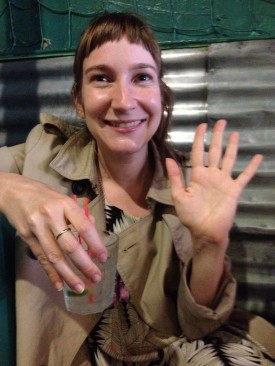
I don’t know a single person who wouldn’t benefit from reading Sheila Heti’s new novel, How Should a Person Be?, a rumination on art, friendship and the other major questions of existence. This “novel from life” features a character named Sheila, who lives (as the author does) in Toronto. In the beginning of the book, Sheila’s friends Margaux and Sholem, both painters, decide to have an “ugly painting competition,” to see who can create the ugliest painting, a process which proves more difficult than expected. In the meantime, Sheila struggles with the challenges of her friendship with Margaux, her inability to write a commissioned play about women, and a sexual obsession with a man named Israel. Combined, these conflicts lead her to the question: “how should a person be?”
You may already know of Heti, from her collection of short fiction, The Middle Stories
, or her first novel, the delightful Ticknor — or even as Lenore Doolan in Leanne Shapton’s fictional auction catalog, Important Artifacts. Last year, she published The Chairs Are Where the People Go, a strange self-help-y type book on human interaction with her friend Misha Glouberman (who appears, by the way, as a character in this new novel). In this email conversation, she and I ended up talking about a wide range of things, from competition between women and why we get crushes, to the freight put on female characters to be “likeable,” the greatness of Chris Kraus’ book I Love Dick, and ugliness.
JESSICA: The first thing I wanted to ask you is, the book is subtitled as “a novel from life,” and the characters in it — you, Margaux, Sholem and Misha — are all real folks. What did the three of them think of the book? Have they read it? Were they involved in the process of writing it, or did it come as a surprise to them?
SHEILA: Well, they all had different thoughts and complex thoughts, of course, and they mostly read it all the way along, not just at the end. Certainly Margaux read about 40 drafts. Even before it was a book, she read what would become the Prologue and was like, “This is the best thing you’ve ever written; this should be the beginning of your next book.” When somebody you’re close to says something like that, it’s hard to ignore. Then when Sholem read it near the end of the process, he didn’t even tell me what he thought; he only told Margaux, who was very discreet, but made me think that it was hard for him. He, especially, was twisted into a new shape for the novel.
All of them knew I was taping [our conversations]. They could see the tape recorder! So no, it wasn’t a surprise to any of my friends. Misha was involved in many ways; for one thing, he told me that the book we wrote together — The Chairs are Where the People Go — couldn’t be part of How Should a Person Be? (At one time I wanted them to be the same book; I thought they were the same book.) And Margaux… well, it’s impossible to underestimate how large a part of the process she was: I was talking to her about art and travelling with her the entire time I was working on it; she cast me in her movie; we shared a studio. She changed my brain. She told me many times, “It’s not good enough, it’s not done,” which is the best, most useful thing for a writer to hear. I don’t know if any of them “like” it, but they let me publish it! That’s all that matters.
JESSICA: Among so many strands of this book, one that really appealed to me was the one about your friendship with Margaux. In the beginning of the book you write that you didn’t really have any friends until you were 25.
SHEILA: My character didn’t!
JESSICA: Personally, I’ve found that it’s more difficult to maintain friendships outside of structured environments (college, workplace). Then there are stereotypes that women have to work against (i.e. women are too competitive with each other to truly be friends), and yet your friendship with Margaux in the book is both personal and professionally collaborative. What defines a friendship for you?
SHEILA: The usual things: affection, interest, intimacy, love. As I get older, I’m more interested in people who want to be in it for the long haul. That makes me feel safer and like I don’t have to rush things.
As for the “competition between women” thing: I think it’s difficult to have a relationship with anybody: boys with boys, girls with girls, girls with boys… the lot. I don’t see the reputed competitiveness, really. Mostly I see smart women and women with power wanting to help each other and encourage each other and support each other in all sorts of ways. Perhaps there’s competitiveness in female friendships that are based on going out and picking up the hottest guy. But I don’t believe that’s the basis for most female friendships. I think the stereotypes exist because there isn’t a lot of honest reporting about how things really are now. Perhaps there’s something politically to be gained from perpetuating the idea that women are naturally dangerous for other women. The truth is, everyone’s a little dangerous, not only women for women.
JESSICA: When did you first start thinking about writing this book? You mentioned earlier that you originally conceived it as part of The Chairs are Where the People Go, or that the two were one in the same. How did that change?
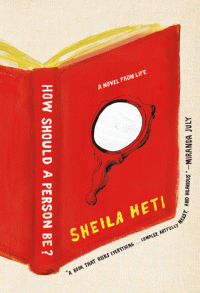
SHEILA: The beginnings of both books were murky. I didn’t think of the writing I was doing for How Should a Person Be? as writing that would become part of a novel until February of 2007, and the earliest writing in the book dates from early 2005. I was just writing and trying to figure out ways to write that involved being part of the world, not apart from it — sitting in a room all alone. So I began taping my friends in 2006, and transcribing our conversations. I had been reading very different versions of the Bible (including a hilarious adaptation for teens that was made to look like a teen magazine) because I was thinking about how the Bible is the ultimate book that intersects with life. Around that time, a friend’s marriage split up, and the wife sent me an angry email — her language seemed grand and “Biblical”; she criticized me for encouraging him to divorce her, when the opposite was true! I was very afraid for him embarking on a new life. But I think that was the first email I turned into a numbered passage because it reminded me of certain passages in the Bible, with that moral and frightening tone.
So anyway, I was doing all these different kinds of writings, then in 2006 I went to Spain and wrote 60 pages of a book in which my friend Misha Glouberman was the protagonist. He was trying to make Toronto into a better place, and I called it The Moral Development of Misha. I can trace the book I later wrote with him, The Chairs are Where the People Go to, that failed thing, but in The Moral Development he was a character of my own invention, and in Chairs he was just speaking as himself, which was better; less fakety-fake.
JESSICA: The Biblical aspect of this is interesting. You touch on the history of the Jewish people briefly in the novel. Do you consider yourself religious? To what extent is your identity tied to being Jewish, or Canadian, if it is at all?
SHEILA: I mean, I am Jewish — and I am Canadian. I wouldn’t say I’m religious or patriotic, nor is my family. We celebrated the major Jewish holidays when I was a kid, and I loved the holidays, and I went to Hebrew school. We sang the Canadian national anthem every morning at school. I’m definitely not American. My dad adored Pierre Trudeau. And I sometimes feel scared when I see the American flag. I come from a place that’s much more skeptical about self-certainty and grandness. When I was a kid, America was the place that had everything, and Canada was the place that had American advertisements for things you could never get in Canada, like certain lip glosses, which made me miserable at 13.
JESSICA: Is there a literary “scene” in Toronto in the same way there is in New York? As a writer would you ever want to live in New York?
SHEILA: There is an active literary scene here, but of course it’s different from the scene in New York. I wish I had astute things to say about the differences, but I haven’t spent enough time in either.
Honestly, I’m not sure I would want to live in New York as a writer. I lived and wrote there for one summer and found myself with this great sense of hurry, like I needed to be writing for the magazines and sort of constantly adding to culture — you want to be part of the moment and the conversation and one of its voices. That felt more important than thinking slowly and taking my time. I like being in a place where I can think and take my time and not feel swept up in a system that’s constantly spitting out culture, which is how I felt there. It’s of course exciting. But here it may be better for me: I feel very clear about what I want to do and what’s important to me to do. I can live and work at my own rhythm, not the city’s rhythm. Toronto’s a good city, and big — my friend and I walked east yesterday for 4-and-a half-hours and we were nowhere near the outskirts. I have a good life here. Also, I think all of contemporary literature shouldn’t be about Brooklyn. That seems really bad.
JESSICA: In the book, Margaux claims that “her words floating from separate from her body” is her worst fear — and yet, this could be a description of the act of writing. I wonder, does it matter at all what part of this novel is fiction and what isn’t fiction? Is there such thing as “fiction” and do we need labels like “fiction” or the more complicated “women’s fiction”?
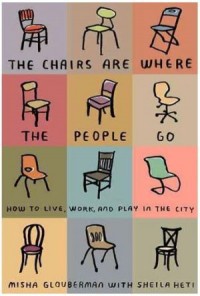
SHEILA: Yeah, it’s a great description of writing.
It doesn’t really matter for the reader, what’s fiction in my book or not, though not knowing does create an anxiety and a curiosity, which interests me. It’s more of an unsettling experience to read something that hovers between invention and fact. I feel it as a reader, too, like when I read Ben Lerner’s Leaving the Atocha Station. Maybe we want to know what’s “true” from what’s “fiction” so we can know what’s possible in our own lives, and these days we mostly only trust narratives “from life” as being able to communicate future possibilities. I think, on some level, we do turn to narratives to help us predict our own futures; like if I do A, B will probably result, because B is what happened to Anna Karenina, or Lauren Conrad.
I think fiction is a useful label, because it means that things have been deliberately shaped to resemble an archetypal truth, or a metaphoric truth, rather than a literal truth, which is more what journalism is. Journalism is shaped, too, but I think there’s a difference between newspaper reportage and fiction, and that has to do with the goals of the writer: are you trying to depict events as they happened as reliably as you can, as they might have been witnessed by anyone? That seems hard, and I could never make that my ambition, because I have a really bad memory, and I don’t care what really happened. What “really” happened doesn’t interest me.
“Women’s fiction” doesn’t sound like anything but a slur to my ears.
JESSICA: You recently read at an event with Chris Kraus, who is one of my favorite writers. Her book, I Love Dick, delighted me with its brutal descriptions of sex, desire, and her personal (and critical) account of the experience of the female artist.
There’s a lot in How Should A Person Be? that reminds me of I Love Dick, in particular the chapters about Israel and the blowjob talk and the “Interlude for Sex” chapter. Can we talk about this? I don’t really know what to ask you, aside from telling you that these parts of the book were refreshing and thrilling to read.
SHEILA: I read I Love Dick in the summer of 2008, and I’m sure it influenced my book. It was the greatest thrill in the world reading it; her courage and nakedness and intelligence, and the brutality of the whole thing; how heartbreaking it is in its depiction of being a woman in a realm where men are much more easily accorded respect–in her case, the academic/art world. Chris falls for Dick partly because he has the privilege of being a recluse and being respected and admired at the same time. A woman who is a recluse isn’t admired and hunted down; she just disappears. So I think she kind of covets the cultural position he has, but being a woman, she can’t easily have it, so — next best thing — she wants to have him. My therapist would sometimes say to me when I had a crush, “What does that person have that you don’t?” because it was her view that we have crushes on people because they have something we don’t, or exhibit qualities that are underdeveloped in ourselves. If you can figure out what that is and cultivate it in yourself, maybe the crush will disappear. But in I Love Dick, Chris can never easily have what Dick has. She hopes to have his power by linking herself to him.
JESSICA: There’s definitely a link between her behavior in the relationship with Dick and her takedown of the art world. So one thing I don’t think I’ve made clear yet is how muchI love How Should A Person Be?. It’s a gem of a book and I love that, rather than placing the main focus on the sexual relationship with the character Israel, you choose to explore the much more complicated friendship between two women — two female artists, at that.
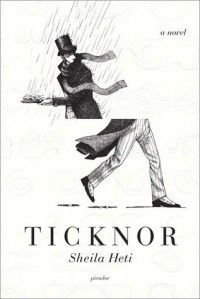
SHEILA: Yeah, I’ve been very interested in friendship. My last book, Ticknor, was about the friendship between two men. With this one, I really wanted to write a book about painting and art, and art in our time. Actually, I wanted to write a book about the history of art! So this book came out of thinking about art, way more than thinking about sex.
JESSICA: Something else that I Love Dick and How Should A Person Be? have in common is that they both defy categorization, and I’m a reader who embraces that wholeheartedly (Out of Sheer Rage is another favorite). Do you think it was the unconventionality of the book that made it a hard sell to publishers in the U.S.? Or was it the sex passages? What was the reasoning editors gave you when they turned the book down?
SHEILA: I loved Out of Sheer Rage, too!
I have no idea what made it a hard sell. One editor said, “Oh sweetie. Maybe you and Margaux should get famous first and then publish this book.”
Usually editors don’t give you thoughtful or satisfying reasons for rejecting something. For one thing, they’re often too busy to write detailed rejections; for another, their dislike is usually a gut reaction, and those are hard to put into words. I think most people prefer what they’ve seen before, with a twist. That gives people a feeling of excitement. If you’re not doing that, it’s harder. Of course, sometimes rejecting a book has to do with a projection about what “the public” wants, or maybe the marketing department doesn’t get it, or maybe your last books didn’t sell well enough. My editor, Sarah Bowlin at Henry Holt, really loved this book, and she totally understood it. I was lucky to find someone so in synch with me, and it, and so smart about every aspect of editing and publishing.
JESSICA: Did you ever think about giving up on its publication in the States or were you determined to find it a publisher in America?
SHEILA: Neither. I don’t remember feeling worried or determined or hopeless. I felt okay. I thought, If people want to read it there, it will work out. A book’s life can’t be controlled by its author. The culture decides what it wants to do with your book, or your film, or whatever. Take Lena Dunham — did she expect the Criterion Collection would want Tiny Furniture, her first feature? She was just making a movie, and trying to make it great, like so many people.
JESSICA: Lena Dunham is awesome. I was out to dinner with some people a few weeks ago, and we were discussing “Girls,” and someone at the table said they didn’t like Tiny Furniture because they found her to be “unlikeable.” I jumped out of my skin! First of all, I personally think she’s incredibly likeable. And secondly, who cares?! Is Woody Allen likeable?
I’m obsessed with how comfortable Lena Dunham is with her body. I was telling a friend that it’s hard to live in New York where every woman ever is probably a model and she just looked at me like I was crazy and said “Who cares?!”
SHEILA: I totally agree with you — her character is likeable, and even if she isn’t, who cares? Why do characters have to be likeable? Female characters especially have to be likeable, which is crazy. But is Achilles “likeable”? Is King Lear “likeable”? Characters aren’t there for us to like them; they’re instructional.
Part of what feels similar about my book and Lena’s work is this question of ugliness; what does it mean to be ugly? Can one be ugly and still appear in the world (and I do not think Lena’s ugly, I think she’s beautiful, but her distance from that model-like beauty is part of where our attention goes…). Can you even make art unless you allow yourself to be ugly, which is a huge part of being human? And of course, allowing yourself to be ugly is a huge part of being funny.
I think it’s really refreshing how — in the case of her movie — we’re seeing things from the POV of the girl that guys don’t want to fuck. So the guys look different, too. Lena is not your typical protagonist. Even the Woody Allen characters were desired! My god! By the best women!
JESSICA: I’m intrigued by the idea of allowing oneself to be ugly to make art. Is it essential to making art? Maybe. Because I think “ugly” can mean a lot of things, most than just physically ugly. I guess what I’m saying here is “ugly” can be a combination of being confident and also selfish.
SHEILA: Yeah. I think you do have to allow into your art the ugliness that’s part of everything. Ryan Trecartin is brilliant at that, and his work is sublime. Same with Harmony Korine. His aesthetic is totally ugly, and yet it’s also the most beautiful: I’ll always remember the strip of bacon taped to the blue tiles above the bathtub in Gummo. It was there for no reason, and it was just sublime! In my book, Margaux says that for her, ugliness is anything that’s really tight — something trying to be perfect, beautiful, contained, which doesn’t let any of the world in. I didn’t agree before, but now I can see it.
JESSICA: In the novel, when the character that’s based on you realizes your marriage is the “brick wall,” did you mean that as, standing in front of your ability to create? There are artists who think committed relationships + art is just not possible, then you have Mary Gaitskill (in your interview with her for The Believer!) saying that all women writers need a wife, like Virginia Woolf had Leonard.
SHEILA: I don’t know. But the older I get, the more I realize it’s possible to make art in any condition: traveling, in one place, in a good relationship, a miserable one, sleeping around, sad, content. One’s state doesn’t matter as much as one imagines. When I was twenty, I was always trying to find or create the perfect condition in which to write. Now I don’t think it exists — the perfect condition — and I don’t even think it’s important. Possibly it’s even better to be in an uncomfortable spot.
JESSICA: One of the novel’s crucial pivot comes during a conversation about two white men going to Africa — when you begin to question the role of art versus the role of charity, or, philanthropy. One thing that strikes me about this book is its relevance to recent events like the Kony/Invisible Children controversy. Also, I don’t know if it’s my age (I’m 27) but this year has been the year when suddenly I was struck with the question “What am I doing?” and “Is it enough/ Is it relevant?” I know so many people who are coming to the stage in their lives — I’m not sure if age has much to do with it.
SHEILA: I started this book when I was 28. I do think its preoccupations have to do with a certain moment in life, where there are these expectations and the fear of not fulfilling them, or not even quite knowing what they are, which I think gets more intense as one gets deeper into one’s twenties, and which then (at least in my experience) eases up in one’s early/middle thirties.
Though probably this “what am I doing?” state can crop up at any age.
JESSICA: I’m glad to hear that it eases up in the thirties, because I am exhausting myself preoccupied with these questions 24/7. I would recommend your book to almost every single person I know, especially women my age. There are moments that are so comforting, mantra moments. There’s also a lot of humor! One of my favorite scenes in the one in the copy shop.
SHEILA: What are the comforting mantra moments?
JESSICA: Well, one of my favorites is the realization about one’s parents — thinking of your parents as “complete,” but then, as you reach adulthood you don’t feel complete at all: “in what seemed like a stratosphere, another stratosphere entirely — but is this. This is the absolute outer limit of the human universe.”
SHEILA: This is really nice and useful for me to read. Thanks!
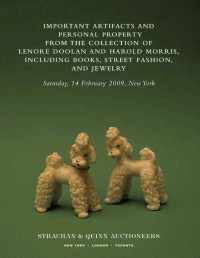
JESSICA: I loved Leanne Shapton’s Important Artifacts; how did she approach you about playing Lenore in the book?
SHEILA: I love that book, too. We were friends, a bit, at the time. Now we’re better friends, since doing the book. Leanne is from Toronto and for the past six years I’ve been living in the apartment she used to live in (though one woman lived here between us). I guess we were talking about this book she wanted to write, and either I said I’d love to play Lenore, or she said, “You should play Lenore.” I was going to be in New York that summer, anyway, so it was kind of perfect, because she photographed it all summer long.
JESSICA: Do you see How Should A Person Be? as a culmination of your work, as in all your books are connected, or are they leading very separate lives?
SHEILA: Not a culmination, but yes, I understand how they’re all connected, and in response to each other, and what I was trying to learn how to do with each book.
JESSICA: Do you have any writing rituals? A routine, when you’re working on something? Things you like to eat?
SHEILA: I have no rituals. I write with no routine, but I’m working all the time. In the mornings I eat chocolate and cookies and drink coffee or tea. I wish I had a healthier routine but it takes too much energy to keep oneself healthy and fit and well fed. When I am healthy and fit and well fed, I feel weird, almost too good, it’s not familiar. I like it, though.
JESSICA: In the beginning of the novel you write, “one good thing about being a woman is we haven’t had too many examples yet of what a genius looks like.” Who are the female geniuses that do exist and who are the women working now you admire?
SHEILA: I don’t know what “genius” means anymore. The word used to be so concrete to me, and now it’s like little particles and I can’t really see it. It would be weird of me to just accept that word at face value, which I can’t anymore! It seems like a “small man” word to make humans bigger than they can truly be, to make them as big as the universe, but the universe really is bigger.
JESSICA: Well, “genius” is a difficult word. Then, who are the female artists that you admire at this moment?
SHEILA: I love the writers Helen DeWitt and Amanda Filipacchi, and the poet Olena Kalytiak Davis, and Jhumpa Lahiri and Alice Munro and Tamara Faith Berger and Janet Malcolm and Anne Carson and Lena Dunham, Margaux Williamson, Miranda July, Leanne Shapton, Sarah Manguso, I can go on and on… The artists Annie Pootoogook and Xaviera Simmons are excellent. Agnes Varda is brilliant. And I’ve got to mention my favourite novelist, Jane Bowles, even though she’s dead.
Related: Talking To Lean Dunham About Being A “Girl” and Male Muses And Inner Dicks: A Conversation With Kate Christensen
Jessica Ferri is a writer living in Brooklyn who loves revenge fantasy films, books that defy categorization, and food blogs. Photo by Kenneth Goldsmith.
